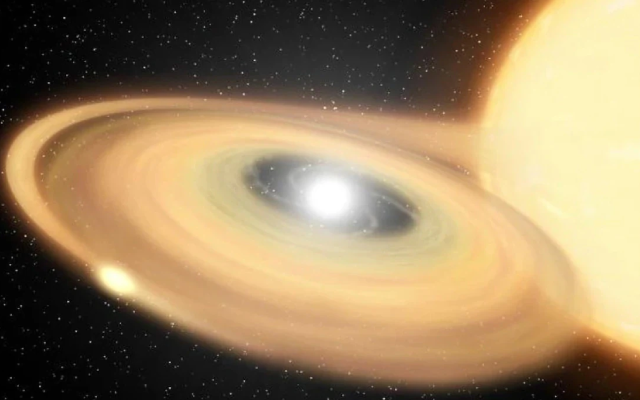Amateur astronomers will have a once-in-a-lifetime opportunity to see this space oddity when a massive explosion 3,000 light years from Earth flares up in the night sky sometime between now and September.
Normally, the binary star system in the “northern crown” constellation Corona Borealis is too faint to be seen with the unaided eye.
However, interactions between its two deadly-entwined stars cause a runaway nuclear explosion roughly every 80 years.
For a few days, the blast’s light appears to have suddenly appeared in our night sky, giving the impression that a new star—as bright as the North Star, according to NASA—has just appeared.
It will be at least the third time that humans have witnessed this event, which was first discovered by Irish polymath John Birmingham in 1866, then reappeared in 1946.
The appropriately named Sumner Starrfield, an astronomer at Arizona State University, told AFP he was very excited to see the nova’s “outburst”.
After all, he has worked on T Coronae Borealis — also known as the “Blaze Star” — on and off since the 1960s.
Starrfield is currently rushing to finish a scientific paper predicting what astronomers will find out about the recurring nova whenever it shows up in the next five months.
“I could be today… but I hope it’s not,” he said with a laugh.
The white dwarf and red giant
There are only around 10 recurring novas in the Milky Way and surrounding galaxies, Starrfield explained.
Normal novas explode “maybe every 100,000 years,” he said. But recurrent novas repeat their outbursts on a human timeline because of a peculiar relationship between their two stars.
One is a cool dying star called a red giant, which has burnt through its hydrogen and has hugely expanded — a fate that is awaiting our own Sun in around five billion years.
The other is a white dwarf, a later stage in the death of a star, after all the atmosphere has blown away and only the incredibly dense core remains.
Their size disparity is so huge that it takes T Coronae Borealis’s white dwarf 227 days to orbit its red giant, Starrfield said.
Because of their close proximity, material released by the red giant gathers close to the white dwarf’s surface.
It takes about 80 years for the mass of Earth to accumulate on the white dwarf, at which point Starrfield said that the planet heats up sufficiently to initiate a runaway thermonuclear reaction.
As a result, there is a “big explosion and within a few seconds the temperature goes up 100-200 million degrees” Celsius, according to German astronomer Joachim Krautter, who studied the nova before retiring.
When T Coronae Borealis explodes, many telescopes will be observing it, including the James Webb space telescope, Krautter told AFP.
But you do not need such advanced technology to witness this rare event — whenever it may happen.
“You simply have to go out and look in the direction of the Corona Borealis,” Krautter said.
Some lucky sky gazers are already preparing for the year’s biggest astronomic event on Monday, when a rare total solar eclipse will occur across a strip of the United States.
Read More
Low Voter Registration Among India’s Youth Raises Concerns

















